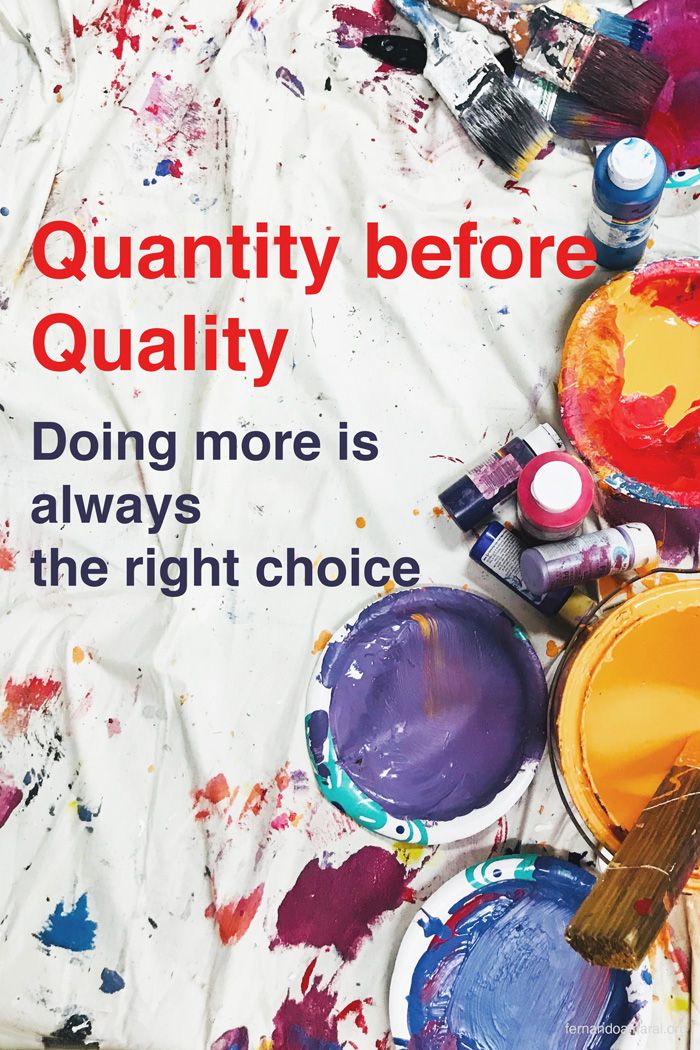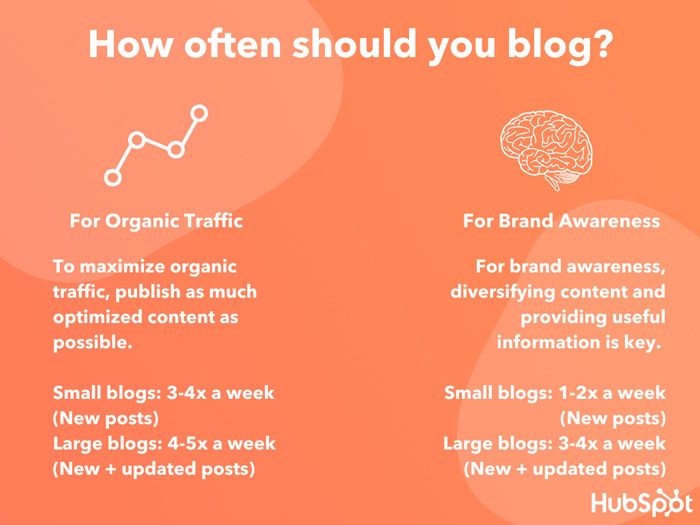Quantity before Quality: Doing more is always the right choice
The quality versus quantity debate shows up in content marketing all the time. Does more content lead to more traffic and more sales? Or, is sporadically publishing captivating content the key?

I hate the cliché 'Quality over Quantity'. There, I've said it. I see no value in this claim, particularly when it comes to content marketing.
Let me be clear: pumping out large quantities of crappy content on the web stopped working as a tactic many years ago. In the same breath, focusing on quality while disregarding the amount of content you publish will never produce impressive results.
The fact is, to maximize the chances of success, you need to step up your game and deliver consistently on both quantity and quality. Anything else is amateurish and will likely fail in a highly competitive environment.
The Quality versus Quantity fallacy
Take a moment to look at these definitions from the Cambridge Dictionary and let them sink in.
Quality: the degree of excellence of something, often a high degree of it.
Quantity: the amount or number of something, especially that can be measured.
Consider what it is you’re aiming for with content marketing – an experience that informs and engages your audience in order to produce repeatable business outcomes. With that in mind, which of these two definitions do you find irrelevant?
It's a trap! Picking one and discarding the other assumes that there was a choice to be made. But in reality, they are compatible concepts and this question is a fallacy. The real choice is to either do both and grow or to pick just one and... not grow.
Quantity comes first
I just claimed that both quantity and quality are indispensable. However, it's important to notice that one comes naturally before the other, chronologically speaking.
At the start of 2021, I set a goal for myself: Read 40 books in a year. The objectives were to build knowledge, get inspiration, and become more skilled at writing.
A few months later, I was ready for the real challenge: publishing an article every week. I am sure that after 52 weeks of consecutive writing, I'll be creating better content than I am now. Plus, I will have built some kind of audience.
I choose to do this because repetition is how you develop your skills, any skills. Every time you publish is an opportunity to receive feedback and improve. Being prolific is not an alternative to being great, it's the path you must walk to get there.
Don't believe me? Take the great Jerry Seinfeld, for example. Jerry used to do a comedy set at Gotham Comedy Club every week. One night while he was there, he ran into Brad Isaac, who was just coming up at the time. Brad seized the opportunity to ask a comedy god how he honed his skills.
Jerry laid out what became known as the Seinfeld Strategy: “Get a big calendar that has all the days on one page and put it up on a prominent wall. Every day you write, mark it with a red X. After a few days, you’ll have a chain. From there, make it your job not to break that chain.”
The strategy is simple and it says nothing about quality or results. It's all about the process, and the process is all about quantity. The rest will follow.
For anyone who has perfected a craft, repetition is almost always at the base. Or, as Zig Ziglar put it “Repetition is the mother of learning, the father of action, which makes it the architect of accomplishment.”
Consistency is essential for growth
Publishing your work consistently will do more than sharpen your skills. It will slowly but surely build an audience. This means that as you get better, more and more people will be paying attention. The more you do, the faster you develop and the bigger your audience grows!

According to Ghost, blogs publishing every week, grow up to five times faster than those publishing sporadically. HubSpot concurs. They suggest that companies should publish in their blog several times per week, even with a small team.
Businesses producing effective content know what their target audience is looking for. They know the frequency that works for their customers and they know the depth and quality expected.
Inspiration at scale
So how can you consistently produce creative work?
Sometimes inspiration is burning brightly and everything just flows. Treasure and leverage those precious moments! But it isn’t always the case. Plenty of times it feels like you’re staring into a void and you will want to give up.
Picasso knew a thing or two about inspiration and he famously said that “Inspiration exists, but it has to find you working.” For those days when inspiration doesn't come knocking, you have to trust the process.
80% of success is just showing up. Do the work, and inspiration will follow.
There are tonnes of techniques you can turn to when you’ve got a blockage. Here are some examples that work for me:
- Keep writing, talking, and ideating. Scribble everything down until it clicks.
- Speak to one reader in particular. Give them a name and treat it like a conversation.
- Meditate for five minutes. Limiting what you're focused on makes room for inspiration.
- Sleep. Even a short nap can work miracles in your brain.
- Pop on a podcast. Listen to other voices discussing your topic to stimulate ideas.
“If we condition ourselves to work without flow, it’s more likely to arrive.” ― Seth Godin, The Practice: Shipping Creative Work
Published is better than perfect
Anyone that advises you to publish only when you're sure to have something amazing to say and a perfect way to put it doesn’t understand growth. Never let perfect be the enemy of good.
Your quality benchmark should be clear and aligned with the business objectives but there is a tipping point for the time invested in creating content. Think of the Law of Diminishing Marginal Returns.
At some point, the incremental quality gained by spending more time on a piece of content will drop off. That is the moment to publish because any additional time will be better used in creating the next piece. The tricky part is finding that balance. That’s why a publication needs an editor.
“Quality takes time and reduces quantity, so it makes you, in a sense, less efficient. The efficiency-optimized organization recognizes quality as its enemy. That's why many corporate Quality Programs are really Quality Reduction Programs in disguise.”― Tom DeMarco, Slack: Getting Past Burnout, Busywork, and the Myth of Total Efficiency
Journalists are publishing news and articles on schedule, every day, with consistent quality. They write in-depth, well-researched, flawlessly written pieces on tight deadlines. Daily, weekly, or monthly, on a schedule, like clockwork. I’ve never seen an empty newsstand because there was no quality content to publish that day.
If companies want their Marketing to be comparable to a media outlet and compete for people's attention, they must operate in the same way. The Quantity vs Quality debate is not an either-or question. Choose both. No excuses.
